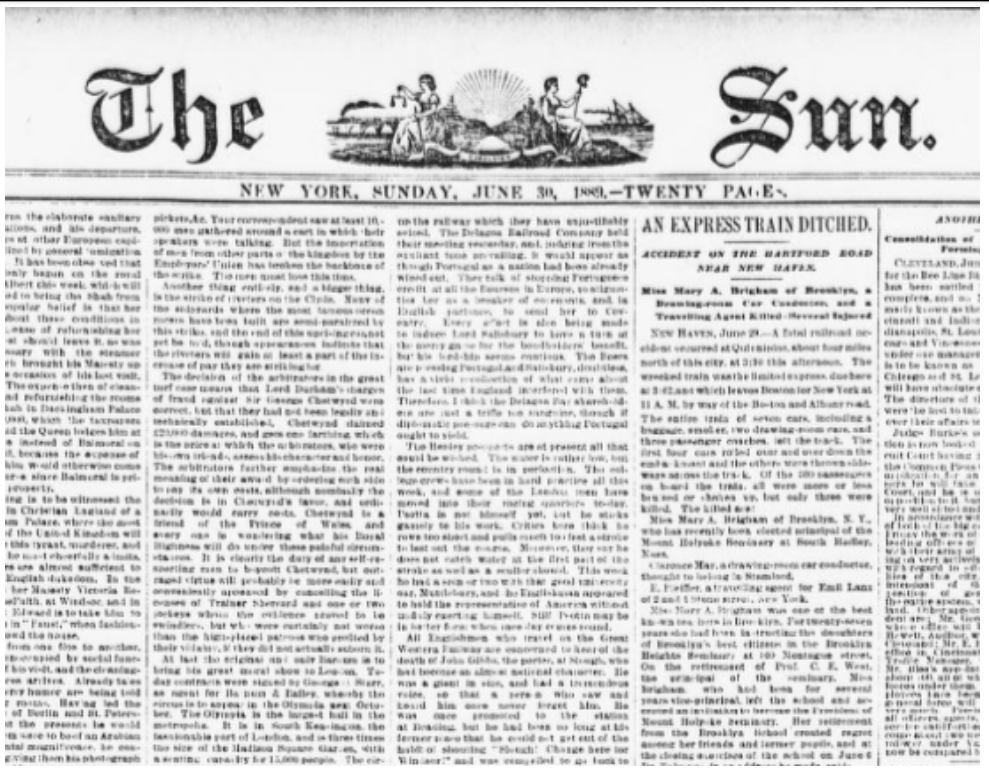For this month’s Mother Cabrini Story we offer you the following article reprinted from The Sun , dated June 30, 1889. This interview with Mother Cabrini took place almost exactly three months from the day she and six of her Missionary Sisters arrived in New York City.
A scan of the original newspaper is in the Library of Congress.
Jacob Riis’ book How the Other Half Lives: Studies among the Tenements of New York documented life in the slums in the 1880s. It was published in 1890, shortly after Mother Cabrini arrived in New York. At the Shrine we use enlarged photos of Riis’ work to show youth what Mother Cabrini and her Missionary Sisters encountered when they arrived. Luigi Palma di Cesnola Very few Italians in New York in the late 19th century were people of means. Count Luigi di Cesnola was an exception. He served in the U.S. Civil War and married Mary Reid, daughter of a hero from the War of 1812. He became the first Director of the Metropolitan Museum of Art. It was Mary di Cesnola who, via Bishop Scalabrini, invited the Missionary Sisters of the Sacred Heart of Jesus to New York. She had secured a house in a good neighborhood to use as an orphanage for the Italian children. “My objective is to prepare these orphans to give quality service in private families,” she wrote to Mother Cabrini. Teaching them fine embroidery and lace making for the wealthy would provide for the means for the upkeep of the orphanage. But as Mother Cabrini learned after she arrived, the house was not ready. Worse, Archbishop Corrigan disapproved of the idea of putting an Italian orphanage on fashionable East 59th Street. The friction was significant enough that at one point during their initial meeting Corrigan suggested to Mother Cabrini that the best course of action would be for her to return to Italy. Mother Cabrini responded quietly that she had been sent by Rome, and thought it best to remain. One of the greatest hardships of that first year in the United States was that the Missionary Sisters were limited to raising funds from Italians, most of whom lived in dire poverty. The archbishop refused to allow them to solicit from anyone else. The result was that in addition to the brutal work of walking through the streets of Five Points to speak with families and children, the Sisters had to beg for funds. Archbishop Michael Corrigan The third Archbishop of New York, Michael Corrigan, was responsible for many developments in the archdiocese. In addition Archbishop Michael Corrigan, third archbishop of New York to completing the towers on the new St. Patrick’s Cathedral he established St. Joseph’s Seminary at Dunwoodie. Archbishop Corrigan had been in office for four years when Mother Cabrini arrived in New York. Although their relationship was challenging at first, Mother Cabrini – who held the clergy in great respect – never wrote an unkind word about him. What we know of her first meeting with him comes to us through the writings of others.

